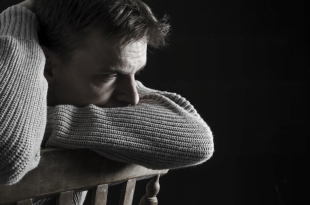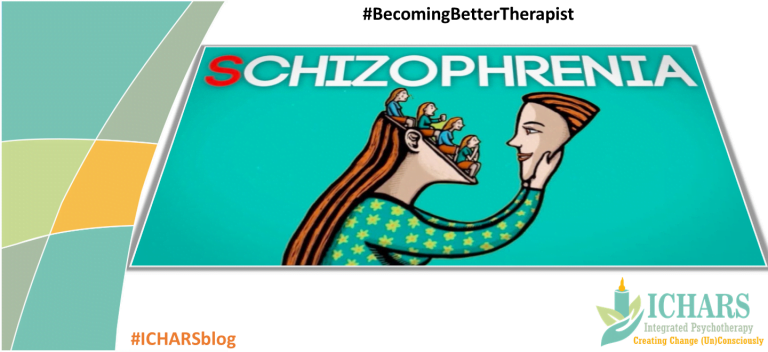Introduction
- What truly is logic?
- Who decides reason?
Ground shattering questions powerfully put forth by John Forbes Nash Jr. in the film, A Beautiful Mind—a biographical film about the noble laureate who suffered from schizophrenia and yet made some superb contributions to the field of mathematics and economics.

The debate of distinguishing what is normal from what is abnormal is a long standing one. Usually we regard a behaviour as being away from the norm when it is maladaptive, distressing, unwanted and/or culturally inappropriate.
In fact, the basic criteria that underlie all psychological disorders are the same as those used to define abnormality. While the ‘abnormality’ accompanying certain neurotic disorders isn’t very readily visible, that which laces psychotic disorders like schizophrenia is quite glaring and in-the-face.
What is Schizophrenia?
The word ‘schizophrenia’ essentially implies the splitting (schiz) of the mind. It is a cluster of disorders comprising a set of symptoms like thought disturbances, perceptual irregularities, emotional disturbances, disorganized speech, distorted sense of self and impaired behaviour, motivation, interpersonal and occupational functioning.
Course of Schizophrenia:
The onset of schizophrenia generally occurs in adolescence or early adulthood which is the time when life tends to become extensively stressful for most of us. We all tend to undergo identity crisis in this period and try to find where we belong. However for individuals with schizophrenia the state of confusion tends to become pervasive.
Adolescence is the time we step out of our secure bubble and start exploring thereby increasing our chances of facing hazardous incidents like accidents, job loss, death or abuse. For individuals predisposed to developing schizophrenia, any of these incidents can serve as a triggering point.
- Prodromal Phase of Schizophrenia
In the initial phase also known as prodromal phase, the affected client starts withdrawing socially. S/he prefers to spend long hours by oneself and may show shallow or no emotions at all.
For instance, even on losing a loved one to an accident, their face may show little grief. At times, this may well go a step beyond and they may show inappropriate emotions.
For example, they may laugh on narrating a painful incident. They start neglecting work and personal hygiene. They may dress inappropriately.
Such symptoms may either develop overnight or gradually over a period of several months.
- Acute Phase of Schizophrenia
Closely following this prodromal phase is the acute phase or the peak period of schizophrenia when the individual’s symptoms are aggravated to the highest possible point. During this period, the individual shows the presence of psychotic symptoms which imply that they have lost touch with reality. These symptoms can be categorized into positive and negative symptoms.
- Residual Phase of Schizophrenia
On successful treatment, the acute phase may end and the client may enter the residual phase where only negative symptoms are present in most cases. However, if positive symptoms do persist, they must do so only in reduced intensity. For instance, they may believe that they can control events beyond human control (e.g. rains) through magical thinking (e.g. if I cry, it will start raining).
It is important that these disturbing symptoms persist for at least a 6 month period wherein the individual experiences an acute phase led up to by prodromal phase and leading up to the residual phase.
Symptoms of Schizophrenia
Positive symptoms of Schizophrenia

Positive symptoms are those that exaggerate functioning beyond the normal level i.e. they add something to the behaviour to make it abnormal. As per the diagnostic requirements, a person is said to have schizophrenia when they show at least one of the following positive symptoms:
- Delusions: A thought disturbance marked by unshakeable false belief that is contrary to the client’s intellectual capacity and cultural background. For instance, in 2005, The Hindu reported that IPS officer K. Panda allegedly believes that he is Radha — the beloved of Lord Krishna.
- Hallucinations: A perceptual irregularity in which a person perceives the presence of stimuli that isn’t present. For instance, hearing a famous politician that you’ve never met talking to you.
- Disorganized speech i.e. language marked by incoherence. It often becomes difficult to understand the loosely connected thoughts of these individuals. They may make use of word clangs i.e. words that rhyme but don’t necessarily make sense when put together in the same sentence. They may also come up with their own words that make sense only to them.
- Grossly abnormal bodily movements i.e. showing extreme rigidity or flexibility in bodily muscles that is caused not due to biological/ physiological deficits but due to psychological deficits. For instance, opening your mouth but not being able to talk after witnessing a trauma as portrayed by a character in the Hindi film Bhool Bhulaiya.
Negative symptoms of Schizophrenia
Moving on to the negative symptoms, these are the ones that they reduce functioning below the normal level i.e. they remove something from the behaviour to make it abnormal. They often originate in the prodromal phase and continue throughout the course of schizophrenia. They include:
- Restricted affect: Ability to show only a narrow range of emotions. For example, very often we see individuals with schizophrenia smiling at us irrespective of the social context.
- Alogia i.e. poverty of speech. They limit their answers very pointedly to what is being asked without adding on information that is often prompted by the question in an implied manner because of their inability to pick up on such cues.
- Avolition: Inability or not wanting to take action.
- Anhedonia i.e. unrelenting pain. They may find it impossible to enjoy pleasurable activities.
- Asociality: Lack of interest in forming social relationships and inability to recognize mental states of others.
Causes of Schizophrenia
Schizophrenia is generally biologically rooted. Use of neuroimaging techniques has shown evidence of wasted brain tissue and lost neural connections that contribute to loosening of thought associations. Family inheritance studies show a heritability estimate of 64 to 81 percent. Exposure to toxins or brain injury during the prenatal and postnatal period may also serve as neurological deficits contributing to this mental illness.
However, according to the Diathesis-Stress Hypothesis, the above mentioned biological contributors simply predispose individuals to developing schizophrenia but they only go on to develop it if exposed to psychologically traumatic and socially stressful situations. Predisposed individuals have a very low stress tolerance threshold, which when surpassed due to experiences of critical family environment, poverty, abuse, drug use, etc. may lead them to develop schizophrenia.
Therapists Niche: Treatment of Schizophrenia
Yet, treatment isn’t impossible.
- Antipsychotics are a must when dealing with schizophrenia.
- Additionally, Cognitive Behaviour Therapy for psychosis (CBTp) is often used to help the clients become less preoccupied and distressed by their symptoms.
- Assigning them homework to promote independent handling of symptoms and asking them to maintain a diary of their delusions and hallucinations are important methods used under CBTp.
- Conversational hypnosis can help in establishing rapport along with giving suggestions for reducing symptoms.
- Suggestions can also be used to help the client deal with the psychologically traumatic and socially stressful situations that could have aided in the development of schizophrenia.
- Increasing stress tolerance threshold is another area where hypnotic suggestions can help.
Important Note for therapists:
In general, use of hypnosis is not recommended with clients having psychosis as most hypnotherapists either lack the conceptual knowledge or lack the required skills. Another reason is that most hypnotherapists use imagination as a primary tool for inducing hypnotic state. This creates a potential for worsening of the condition. It is for this reason that we believe that only a person who is trained both in psychiatry and in hypnosis, that too in a safe environment, should use hypnosis with clients having schizophrenia.
There is an interesting publication titled “The effective use of hypnosis in schizophrenia: structure and strategy” that I have come across recently. Details of the hypnotherapeutic structure and strategy used for managing delusions in schizophrenia are presented with representative cases in the publication.
You can learn more about integrating clinical hypnosis with cognitive therapies in our comprehensive course on Cognitive Hypnotic Psychotherapy™ that focuses on helping mental health practitioners develop advanced therapeutic skills.

